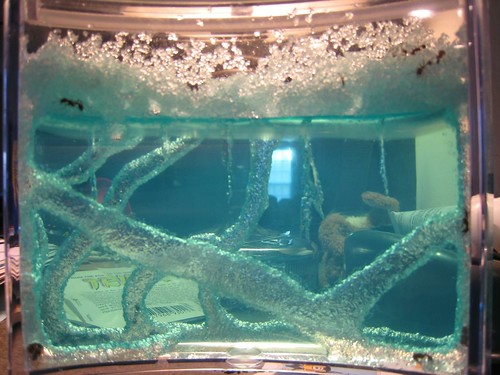For the last few days I have been experimenting with various aspects of Minecraft. I have discovered that the Minecraft ecosystem is a lot bigger than I thought. The folks at Mojang have kept their platform open enough to inspire a faithful community of fans that mashup and repurpose their game. Different server platforms have been made, hundreds of plugins have been created to change the game play, and complete worlds have been built for others to enjoy.
I was impressed to find a wealth of fan created content, including texture packs, custom maps, even new ways of playing the game. Some users use Hunger Games inspired maps to play their own version of this dystopian survival competition. I was impressed that they even include Sponsors (interesting way to inspire fan fiction during English class, right? ) Other users have created maps with dueling pirate ships, complete with working cannons that have been created using the in-game machine parts. I think building a working cannon with levers, pistons, and switches would be a nice complement to a simple machines or circuits unit.
I was originally interested in providing a virtual environment for students where principals of government, needs and wants, community, and citizenship could be explored. Ideally, students would have opportunities to let their imaginations run wild or explore and build places with a context, such as creating a colonial village. When I discovered fan-created adventure games using Minecraft as a platform, I realized even more possibilities. These games include involved storylines, puzzles, and quests. I’m currently playing Inkstar and it is pretty amazing for fan content. Could students write collaborative story arcs that other students could play in Minecraft? This could potentially take the Ant Farm idea to the next level.
Minecraft's open-game platform has created an outlet for a dedicated fan base to repurpose the game in interesting ways. I think this has also created opportunities for education, but I’m discovering that exploiting these opportunities will take some work. The question I am currently wrestling with is, "Will the work be worth the return?" Fortunately, this work feels a lot like play and I guess that's the big idea, isn't it?
